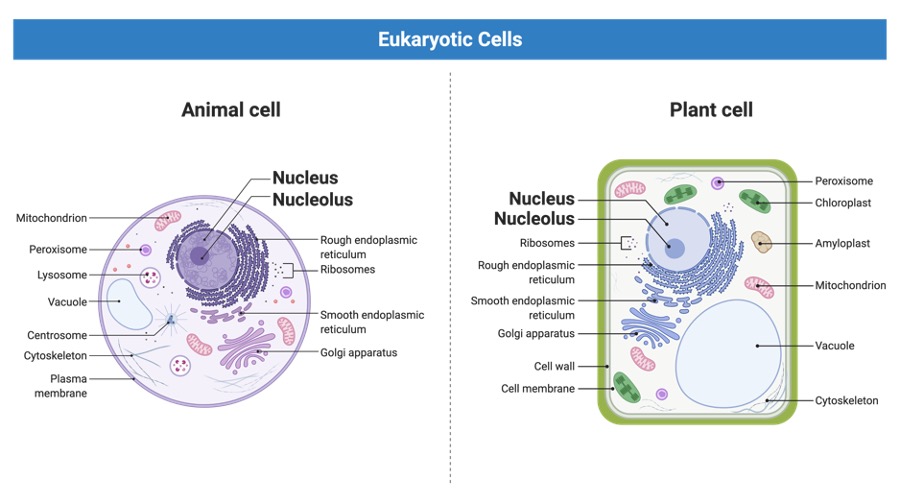Table of Contents
Nuclear Matrix Definition
Nuclear matrix is a filamentous protein network that stretches across the nucleoplasm of the cell nucleus in three dimensions.
What is Nuclear Matrix?
The nucleus is the organelle in eukaryotic cells that is responsible for maintaining DNA integrity as well as managing cellular functions including metabolism, growth, and reproduction through regulating gene expression.

It’s a double-membraned organelle that houses nuclear structures like chromatin, nuclei, and nuclear matrix. The nuclear matrix is a network of fibres that runs through the nucleus. It is the nucleus’s cytoskeleton. While the cytoskeleton provides structural support and transport throughout the cytoplasm, the nucleus also includes fibrous scaffolding in the form of the nuclear matrix.
Nuclear Matrix Features
The nuclear matrix, like the cytoskeleton in the cell, is a network of fibres in the nucleus. However, the nuclear matrix is more active. The nuclear matrix, like the cytoskeleton, primarily provides mechanical support.
It contains the nuclear lamina, a thick fibrous network that connects the nuclear envelope to the endoplasmic reticulum on the outside. The nuclear lamina is made up of two primary components: intermediate filaments, notably lamins, and nuclear lamin-associated membrane proteins.

The remaining parts of the nuclear envelope, i.e.; the pore complex-lamina, the residual nucleoli, and a granular and fibrous matrix structure extending throughout the nucleus, are thought to make up the nuclear matrix. When the nuclear envelope is treated with buffers, the pore complex-lamina is the remaining framework (such as those containing non-ionic detergents, nucleases, etc.).
The term “residual nucleoli” refers to the structure that remains after extraction processes (nucleolar matrix) (e.g. via DNAse I treatment) The nuclear matrix appears to be linked with a variety of proteins. SAR (Scaffold Associated Regions) proteins are thought to have a function in chromatin structure.
During the interphase, they serve as attachment points for the DNA loops. Actin was also found in the nucleus, according to reports. The nucleus’ actin is involved in RNA transcription and metabolism.
Nuclear Matrix Function
The nuclear matrix provides structural support for the nucleus, allowing it to retain its overall form and size. The nuclear matrix, which includes the nuclear lamina, is therefore linked to the organization of genetic information, as the nuclear lamina is involved in DNA replication and cell division.
The nuclear lamina also helps to organize chromatin and anchor the nuclear pore complexes in the nuclear envelope. The matrix’s interaction with proteins like SARs led to its involvement in a variety of nuclear processes, including chromosomal structure, gene localization, and DNA transcription and replication control.
Nuclear Matrix Citations
- The nuclear matrix in pathology. Virchows Arch . 1999 Oct;435(4):391-9.
- Organization of sperm DNA by the nuclear matrix. Am J Clin Exp Urol . 2018 Apr 1;6(2):87-92. eCollection 2018.
- Nuclear Lamins: Thin Filaments with Major Functions. Trends Cell Biol . 2018 Jan;28(1):34-45.
- Unravelling the Network of Nuclear Matrix Metalloproteinases for Targeted Drug Design. Biology (Basel) . 2020 Dec 19;9(12):480.
- Figures are created with BioRender.com







